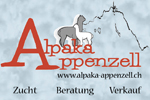Articles by Alpaca World Magazine:
Suri Fibre
Phillipa Gardner
Project shows bright future for suri fibre
A project involving New Zealand and Australian suri alpaca breeders could one day lead to the commercialisation of the fine micron fleece these animals produce.
Known as the Rumplestiltskin project, the 13 month venture will hopefully grow the business of New Zealand?s suri alpaca industry.
One of the suri breeders involved in the project , Phillipa Gardner, says it has been hugely challenging.
"It has taken passion and perseverance to get the fibre off the back of the alpaca and into a processor.? There have been times where there have been tears, a lot of exasperation when we really wanted to give up, but what has kept us going is that this fibre is just so bloody exquisite that you can?t help but do something with it. It has been an interesting journey?.
Phillipa says she knew it was possible as Peruvian designers had been using suri fleece to make garments for some time. Suri fibre was a fine micron fibre that commanded a high price and these prices remain the most stable she says. ?If you are breeding fine and uniform fleeces, those prices stay pretty static?. One of the biggest challenges the sustainable farming funded project faced was sourcing the fibre.
Suris are a rare animal, representing only 4-5% of the world alpaca population. The breed made up 15% of the 20,000 to 25,000 alpacas in New Zealand. The remaining 85% are huacaya alpacas.
Phillipa says she found they could not get the amount of fibre needed for commercial processing in New Zealand so decided to source the fibre from Australian breeders, who had been very supportive in this project.
The group approached Canterbury Woolscourers in Timaru who agreed to process the fibre, despite the small amount of product they would be processing and the unknown factor of what suri might do in their machinery.
?These guys are scouring 500 kg of wool every 6 minutes. We?re putting through 160 kg of the Rumplestiltskin fibre. It was a really big challenge for them but they were keen to work with us?.
They had to clean their machines before processing the suri fibre to prevent contamination, which took an entire day and a loss of earnings for the scour, despite the monetary contribution from the breeders.
?They were willing to give it a go because they wanted to expand the fine wool market, because they see there is an opportunity for them?.
Phillipa says they are part-way through processing all the fibre. The bushfires in New South Wales caused a delay in collecting the suri fibre from across the Tasman. This meant they could not meet the deadline for processing the scourer requested. It has resulted in the process running about 4 months behind schedule. She hopes it should be completed by March 2014. The fibre is still at the scour and it about to be transferred to fibre spinner DesignSpun for spinning.
This proved its own challenge. There are no mills in New Zealand that had a fine wool spinning frame and were fully worsted, which is a spinning technique used for the tailoring of garments such as suits.
Phillipa says their next step will be to source a weaver for the spun fibre. The Rumplestiltskin project evolved out of the Surissimo trial in Australia, which aimed to prove that suri fiber could be processed through modern machinery. This in itself proved to be a massive challenge she says. ?It took two years to convince AgResearch scientists to actually give suri a go?.
?The anxieties around how it processed, that it would ruin machinery and that it will be impossible to get anything else out the other end was really challenging?. This was because of the unique nature or suri fibre.
The fibre is silky, soft and smooth. It has a very long scales on the fibre strands and a very low scale profile. Wool has a short scale and a higher profile and the scales of the fibre catch on one another easily. A suri fleece was not like that Phillipa says. ?That?s what gives suri it lovely slick. A well nourished fleece is also a very lustrous fleece and this is important in processing?. The limited supply of the fleece has to be turned into an advantage by focusing on a market where money can be made at the other end.
The nature and make-up of suri fibre meant it is a very heavy fibre. This was a huge advantage because it allows the fibre to drape naturally. Another key advantage was that no chemicals were needed to be added to suri fibre for it to retain its lustre.
If you are making merino suiting right now, to get the drape and to get the lustre, they put chemicals onto the fibre to enable that to happen. We don?t need to do that for suri?.
The sustainability of alpaca farming was also a strong marketing arm for the breeders. ? They are easy on the land and we can tell the most fantastic story around suri?. That sustainability story was very important for those high-end markets that suri fibre was aiming at? she says.
Suri is a rare animal. There?s not a lot of them and we need to focus on markets where we can make some economic gain at the other end and that is about using their rarity and how we farm them to our advantage?.
Bumble Hill Alpacas Julienne Gelber worked with AgResearch five years ago on their 'Surissimo Project' and the fabric that was paraded on the catwalk during the New Zealand Fashion Week in 2010 was outstanding.
It has qualities that could compete in the high-end of luxurious fabric markets. The AgResearch technicians told the suri breeders that the fabric could ?blow cashmere out of the water?.
?We knew now that we could make a very high performing fabric?. Phillipa says once the project is finished they hope that all of the suri breeders who contributed fibre will have some of the produced cloth.
?It?s so they have something to show for the animals they are breeding and producing this really high end luxurious cloth.
It will help grow their own businesses and the suri fibre industry which Phillipa ?truly believed? breeders can have.
?It?s just sitting there waiting for us to do it. We just need to have the courage to take the step and breed the suri well.
This project is being run by Surico Alpaca and Thistledown Suri Stud in NZ with the help of the Sustainable Farming Fund , a NZ government organisation.
Tweet



